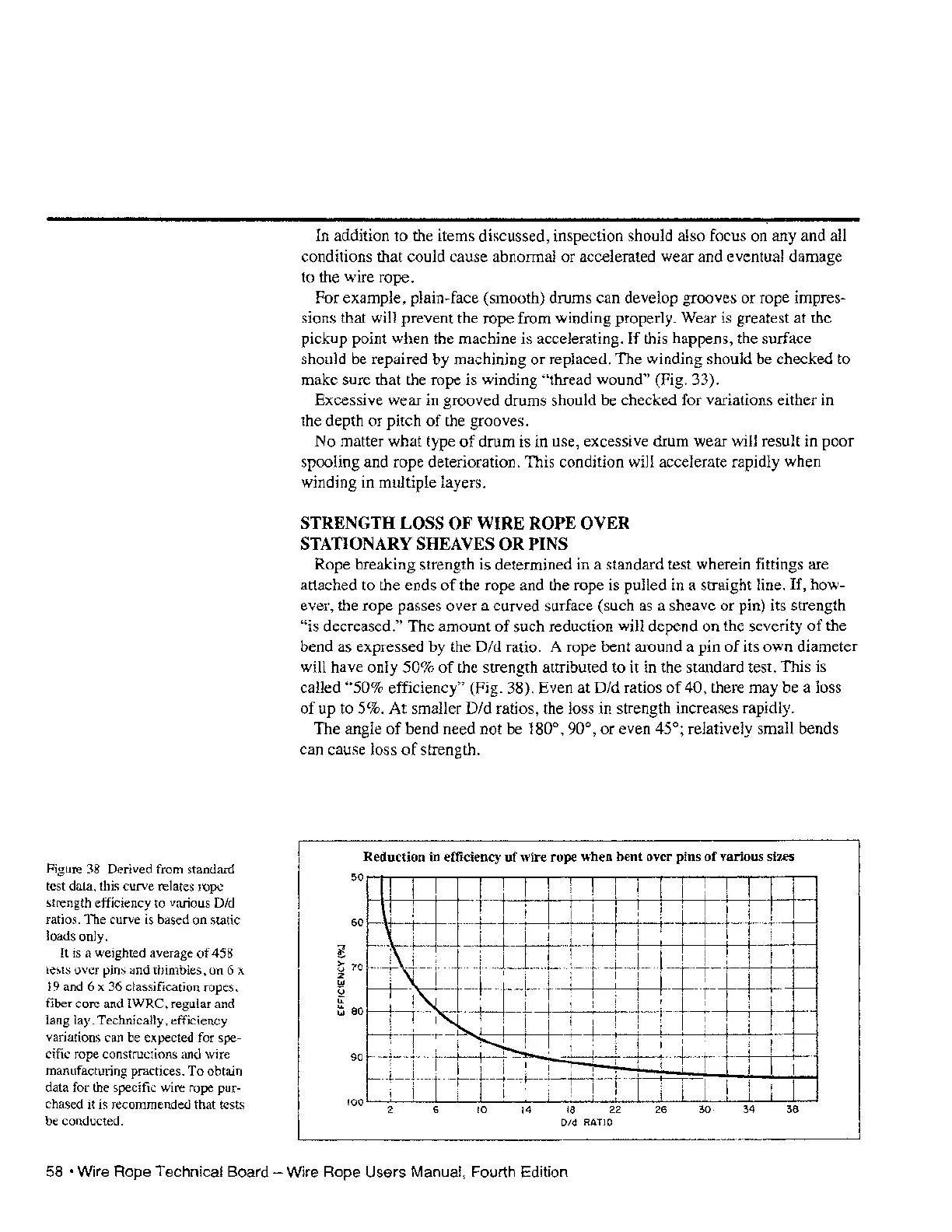Figure 38 Derived from standard
test data, this curve relates rope
strength efficiency to various
Did
ratios. The curve is based on static
loads only.
It is a weighted average
of
458
tests over pins
and thimbles, on 6 x
19 and 6 x 36 classification ropes,
fiber core and IWRC, regular and
lang lay. Technically, efficiency
variations can
be
expected for spe-
cific rope constructions and wire
manufactUling practices. To obtain
data for the specific wire rope
pur-
chased
it
is
recommended that tests
be conducted.
In addition to the items discussed, inspection should also focus on any and all
conditions that could cause abnormal or accelerated wear and eventual damage
to the wire rope.
For example, plain-face (smooth) drums can develop grooves or rope impres-
sions that will prevent the rope from winding properly. Wear
is
greatest at the
pickup point when the machine is accelerating.
If
this happens, the surface
should be repaired by machining or replaced. The winding should be checked to
make sure that the rope is winding
"thread wound" (Fig. 33).
Excessive wear in grooved drums should be checked for variations either in
the depth or pitch
of
the grooves.
No matter what type
of
drum is in use, excessive drum wear will result in poor
spooling and rope deterioration. This condition will accelerate rapidly when
winding in multiple layers.
STRENGTH LOSS
OF
WIRE
ROPE
OVER
STATIONARY
SHEAVES
OR
PINS
Rope breaking strength is determined in a standard test wherein fittings are
attached to the ends
of
the rope and the rope is pulled in a straight line.
If,
how-
ever, the rope passes over a curved surface (such as a sheave or pin) its strength
"is decreased." The amount
of
such reduction will depend on the severity
of
the
bend as expressed by the
Did
ratio. A rope bent around a pin
of
its own diameter
will have only
50%
of
the strength attributed to it in the standard test. This is
called
"50% efficiency" (Fig. 38). Even at Did ratios
of
40, there may be a loss
of
up to 5%.
At
smaller
Did
ratios, the loss in strength increases rapidly.
The angle
of
bend need not be 180°,90°, or even 45°; relatively small bends
can cause loss
of
strength.
Reduction
in
efficiency
of
wire
rope
when
bent
over pins
of
various sizes
50
60
~
1:;
70
z
w
U
G:
b
80
90
100
\
"\
-
--
---
"
J"
i
I
j
2 6
~~~-
-,-.--~
r-
---
~i
L
~
I
I
I
I
I
i I
10
14
18
22
26
30
34 38
Old RATIO
58 • Wire Rope Technical Board - Wire Rope Users Manual, Fourth Edition
